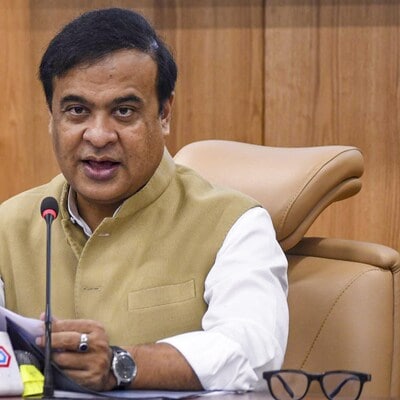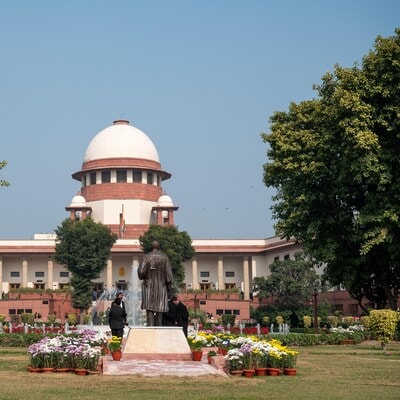)
Guwahati: Assam Chief Minister Himanta Biswa Sarma (Photo: PTI)
The Assam government has accepted 1951 as the cut-off year for implementing certain recommendations of the Justice (Retd) Biplab Sharma Committee concerning Clause 6 of the Assam Accord. The decision was made following a crucial meeting between the state government and the leadership of the All Assam Students’ Union (AASU) at Lok Sewa Bhawan, Guwahati. The state government has also initiated the implementation of 52 recommendations from the Justice Biplab Sarma Committee. But what does it mean for the people of Assam?
Contents
What is the Assam Accord?
The Assam Accord, signed in 1985, is a pivotal document aimed at preserving the political, cultural, and economic rights of the Assamese people.
The Justice (Retd) Biplab Sharma Committee was constituted by the Union Home Ministry in 2019 to explore how Clause 6 of the Accord can be effectively implemented.
What is Clause 6 of the Assam Accord?
Clause 6 of the Accord states, “Constitutional, legislative and administrative safeguards, as may be appropriate, shall be provided to protect, preserve and promote the cultural, social, linguistic identity and heritage of the Assamese people.”
The Assam government’s actions aim to address the long-standing demand to protect the rights of the indigenous people of Assam, a key issue in the state’s political landscape. The committee’s report also stressed safeguarding land, culture, and language, areas where the state has already made strides.
What were the committee findings?
On February 20, 2020, the committee submitted its report with a series of recommendations. A key aspect of the report revolves around identifying ‘Assamese People’ and the protection of their land, language, and cultural rights. The committee defined ‘Assamese People’ as those:
(i) Those generally referred to as Assamese.
(ii) Indigenous tribal or ethnic groups of Assam.
(iii) Those with roots in Assam on or before January 1, 1951, and their descendants
Why is 1951 the cut-off year?
The choice of 1951 as a cut-off year stems from historical records, particularly the census conducted in that year. The committee’s report referred to the definition of ‘Indigenous person of Assam’ found in the 1951 census report, which was the basis for preparing the National Register of Citizens (NRC) for Assam.
The report emphasised that pre-1951 Assamese roots are essential for identifying certain indigenous groups.
However, the chief minister reassured the public that this cut-off year applies only to specific recommendations and will not affect other areas of public life, such as voting or employment.
You won’t be required to show 1951 documentation for regular affairs like obtaining a licence or entering a restaurant,” he said.
Recommendations of the committee
The Justice (Retd) Biplab Sharma Committee’s report includes various recommendations, and according to the Chief Minister, the state government has outlined a roadmap for their implementation. Out of these:
1. 40 recommendations fall entirely under the purview of the state government.
2. 12 recommendations require approval from the Government of India.
Efforts are already underway to implement those under state control, and the state intends to engage with the central government regarding the rest. A roadmap for implementation will be submitted to AASU by October 25, 2024.
Key areas covered by these recommendations include land, language, and cultural heritage:
Land: Certain areas will be designated for restricted land ownership, allowing only “Assamese people” to own and transfer land. A three-year program will also allot land titles to “Assamese people” who have occupied land for decades without legal documents. Additionally, newly created riverine areas along the Brahmaputra will be designated as government land, with priority for allotment given to people affected by erosion.
Language: Assamese will remain the official language, with allowances for regional languages in the Barak Valley, Hill districts, and Bodoland areas. All state government acts, rules, and orders will be issued in Assamese and English. To preserve indigenous languages, an Autonomous Language and Literature Academy/Council will be established. Additionally, Assamese will be made compulsory up to Class VIII or X in all English medium schools, including those under the state board and the Central Board of Secondary Education (CBSE).
Heritage: An autonomous authority will be established for the development of Neo-Vaishnavite sattras (monasteries), including financial support. Additionally, each district will have multipurpose cultural complexes to preserve the cultural heritage of ethnic groups.
Some of the recommendations that have been left out include:
Inner line permit (ILP): The introduction of ILP for entry into Assam, which is already in place in Nagaland, Arunachal Pradesh, Manipur, and Mizoram, is not included.
Reservations: Recommendations for 80-100 per cent reservation for ‘Assamese people’ in Parliament, state Assembly seats, local bodies, and government jobs, as well as in state-private partnerships, have not been adopted. There was also a proposal for an Upper House in Assam’s legislature, reserved entirely for ‘Assamese people’.
As the state government continues to implement these recommendations, it remains to be seen how the Centre responds to the remaining aspects, particularly those that require its direct involvement. For now, the state is moving ahead with a selective adoption of the committee’s suggestions, marking a step forward in the ongoing effort to fulfill the Assam Accord’s promises.
[With agency inputs]
First Published: Sep 27 2024 | 11:52 AM IST










Leave a Reply